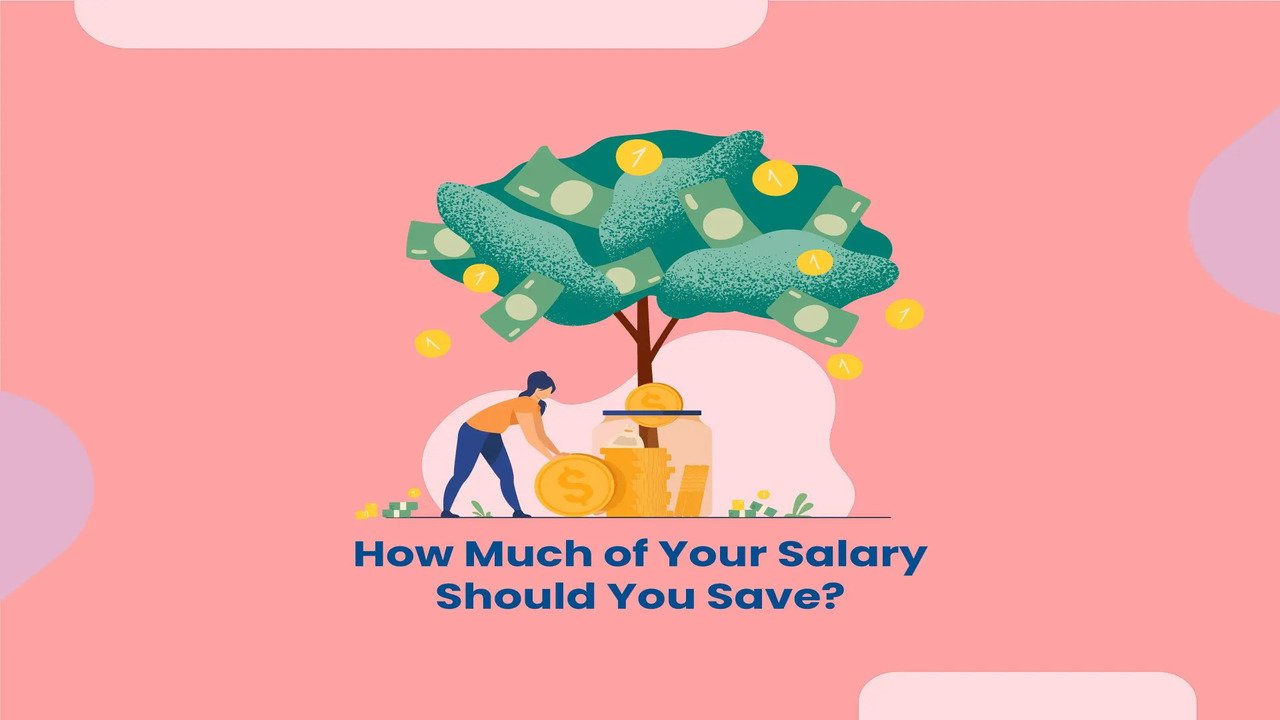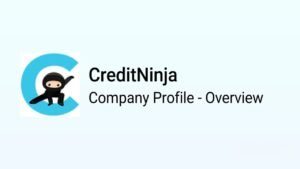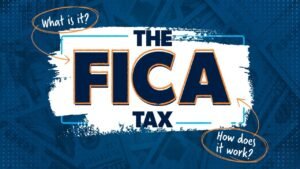Budgeting and Saving: Your Guide to Financial Freedom 2025.
Budgeting and Saving Feeling like your money just disappears every month? You’re not alone. Many people struggle with managing their finances, leading to stress and missed opportunities. But what if there was a way to get a handle on your cash, build up some savings, and actually feel good about your money situation? This guide is all about making budgeting and saving work for you, so you can stop worrying and start living. We’ll break down how to figure out where your money goes, make a plan that fits your life, and actually start putting money aside for the things you want. It’s not about being super strict; it’s about being smart with your money so you can get where you want to go.
Thank you for reading this post, don't forget to subscribe!Key Takeaways
- Figure out where your money is actually going by tracking your spending.
- Create a budget that works for your lifestyle, not against it.
- Start building a safety net with an emergency fund.
- Make saving a habit by setting up automatic transfers.
- Tackle debt head-on to free up more money for saving and future goals.
Understanding Your Financial Landscape

Before you can really get a handle on your money, you need to know where you stand. It sounds obvious, but so many people skip this part. It’s like trying to bake a cake without knowing what ingredients you have in the pantry. You might end up with something edible, but probably not what you intended.
Assessing Your Current Financial Situation
This is where you get real with your numbers. Grab a notebook, open a spreadsheet, whatever works for you. You need to see what you own and what you owe. This includes things like bank accounts, any investments you might have, and even big stuff like a car or a house. On the flip side, list out all your debts – credit cards, student loans, car payments, mortgages. Knowing your net worth, which is simply what you own minus what you owe, gives you a baseline. It’s not about judging yourself, it’s just about getting the facts straight.
Here’s a simple way to start:
- Assets:
- Checking Account Balance
- Savings Account Balance
- Value of Investments (stocks, bonds, etc.)
- Estimated Value of Car
- Estimated Value of Home
- Liabilities:
- Credit Card Balances
- Student Loan Balances
- Car Loan Balance
- Mortgage Balance
Identifying Spending Habits
This is often the most eye-opening part. Where is your money actually going? You might think you know, but when you track it, you often find surprises. Did you realize how much you spend on coffee runs or impulse buys each month? Tracking your spending helps you see patterns you might not be aware of. It’s about understanding your spending behavior, not just the numbers.
Tracking your expenses doesn’t mean you can never buy yourself a treat. It just means you’re making conscious choices about where your money goes, rather than letting it slip away without you noticing.
Setting Realistic Financial Goals
Once you know where you are and where your money goes, you can start thinking about where you want to be. What do you want to achieve financially? Maybe it’s saving for a down payment on a house, paying off a specific debt, or building up a solid emergency fund. Your goals should be specific, measurable, achievable, relevant, and time-bound (SMART). For example, instead of “save more money,” a good goal is “save $5,000 for an emergency fund within 12 months.”
Crafting An Effective Budget
Alright, so you’ve taken a good look at where your money is actually going. That’s a big step! Now, let’s talk about making a budget that actually works for you, not against you. Budgeting and Saving Think of a budget as your personal financial roadmap. It helps you see where your money is coming from and, more importantly, where it’s going. Without a budget, you’re basically driving blind.
Choosing The Right Budgeting Method
There isn’t a one-size-fits-all budget. What works for your friend might not work for you. The key is to find a system that you can stick with. Some popular methods include:
- The 50/30/20 Rule: This is pretty straightforward. Allocate 50% of your income to needs (rent, utilities, groceries), 30% to wants (entertainment, dining out), and 20% to savings and debt repayment. It’s a good starting point if you’re new to budgeting.
- Zero-Based Budgeting: Every single dollar of your income is assigned a job. Income minus expenses should equal zero. This method requires more detail but gives you a lot of control.
- Envelope System: This is a more hands-on approach. You allocate cash into different envelopes for various spending categories (groceries, gas, fun money). Once an envelope is empty, you stop spending in that category until the next payday. It’s great for controlling overspending.
Tracking Income and Expenses
This is where the rubber meets the road. Budgeting and Saving You need to know exactly how much money is coming in and where it’s all going.
Here’s a simple way to break it down:
| Category | Description | Amount (USD) | Type |
|---|
| Salary | Monthly paycheck | $3,000.00 | Income |
| Freelance Work | Design project | $500.00 | Income |
| Rent | Apartment rent | $1,200.00 | Expense |
| Utilities | Electricity, water | $150.00 | Expense |
| Groceries | Food and supplies | $350.00 | Expense |
| Transportation | Gas and public transit | $100.00 | Expense |
| Entertainment | Streaming, movies | $75.00 | Expense |
| Dining Out | Restaurants, cafés | $120.00 | Expense |
| Savings Deposit | Monthly savings | $500.00 | Expense |
| Miscellaneous | Other small expenses | $80.00 | Expense |
You can use apps, spreadsheets, or even a good old-fashioned notebook to keep track. The most important thing is consistency. Don’t just track for a week; make it a habit.
Allocating Funds For Needs And Wants
This is often the trickiest part. Needs are things you absolutely cannot live without – housing, food, utilities, essential transportation. Wants are things that make life enjoyable but aren’t strictly necessary – that new gadget, eating out frequently, streaming subscriptions you barely use.
It’s not about deprivation; it’s about making conscious choices. If you want to save more or pay down debt faster, you might need to trim back on some wants. Budgeting and Saving Maybe instead of eating out three times a week, you cut it back to once. Or perhaps you can find a cheaper phone plan. These small adjustments add up. Remember, a budget is a tool to help you achieve your financial goals, not a punishment. You can find more tips on managing your money at personal finance resources.
The Art Of Strategic Saving
Saving money can feel like a chore, but it’s really about giving your future self a break. Think of it as a way to buy yourself peace of mind and options down the road. Budgeting and Saving It’s not just about putting money aside; it’s about doing it smartly so it actually grows and helps you reach your goals.
Building An Emergency Fund
This is your first line of defense against life’s curveballs. You know, like when the car decides to quit on a Tuesday morning, or you have an unexpected medical bill. Having cash readily available means these things don’t turn into major financial crises. Budgeting and Saving Most experts suggest aiming for three to six months of your essential living expenses. It sounds like a lot, but you can build it up gradually.
- Start Small: Even $20 a week adds up. The key is consistency.
- Separate Account: Keep this money in a separate savings account, maybe one that earns a little interest. Don’t mix it with your checking account.
- Replenish Quickly: If you have to dip into it, make paying it back a priority.
Saving For Short-Term Goals
Beyond emergencies, you probably have things you want to buy or do in the next year or two. Maybe a vacation, a new laptop, or a down payment on a car. These are your short-term goals. Breaking them down makes them feel more manageable.
Let’s say you want to save $1,200 for a trip in 12 months. That’s $100 per month, or about $25 per week. It’s much easier to picture saving $25 than $1,200 all at once.
Automating Your Savings
This is where the magic happens. If you can set up automatic transfers from your checking account to your savings account right after you get paid, you’re golden. You won’t even miss the money because it’s gone before you have a chance to spend it. Budgeting and Saving It’s like paying yourself first, but without having to remember to do it.
Setting up automatic transfers is one of the most effective ways to build savings without feeling the pinch. It removes the temptation to spend the money and ensures steady progress towards your financial objectives.
Here’s a simple way to think about it:
- Decide on the amount: How much can you realistically set aside each payday?
- Set up the transfer: Log in to your bank’s website or app and schedule the recurring transfer.
- Review periodically: Check in every few months to see how you’re doing and adjust if needed.
Conquering Debt For Financial Freedom
Dealing with debt can feel like a constant uphill battle, but it doesn’t have to be your whole story. Getting a handle on what you owe is a big step toward actually feeling free with your money. It’s about making a plan and sticking to it, even when it feels tough.
Strategies For Debt Reduction
There are a couple of popular ways people tackle debt. The first is the debt snowball method. You pay off your smallest debts first, regardless of interest rate. Budgeting and Saving Once a small debt is gone, you roll that payment amount into the next smallest debt. This gives you quick wins and keeps motivation up. The other is the debt avalanche method. Here, you focus on paying off the debt with the highest interest rate first. This saves you the most money on interest over time, but it might take longer to see those first debts disappear.
Here’s a quick look at how they differ:
| Method | Focus | Pro |
|---|---|---|
| Debt Snowball | Smallest Balance First | Quick wins, builds momentum |
| Debt Avalanche | Highest Interest Rate First | Saves most money on interest |
Prioritizing High-Interest Debt
If you’ve got credit cards or personal loans with really high interest rates, those are usually the ones that cost you the most over time. Think of it like a leaky faucet – the longer you leave it, the more water (or money) you waste. Paying extra on these high-interest debts first can really make a difference in how much you owe overall. It’s a smart move to put any extra cash you have towards these accounts before anything else.
When you’re looking at your debts, don’t just see numbers. See the interest charges that are growing each month. Targeting those high-interest accounts aggressively is like putting out the biggest fires first. It frees up more of your money to go towards other goals, or even more debt repayment, faster.
Avoiding Future Debt Accumulation
Once you start getting debt under control, the goal is to not fall back into old habits. This means being really honest about your spending and making sure your budget actually works for your life. It’s about building a buffer so unexpected costs don’t send you right back to the credit card. Think about setting up automatic transfers to savings right after you get paid. Budgeting and Saving That way, you’re saving before you even have a chance to spend it. It’s a simple trick, but it works wonders for keeping your savings growing and your debt shrinking.
Smart Spending And Lifestyle Adjustments
Distinguishing Needs From Wants
Okay, so we’ve talked about budgeting and saving, but let’s get real for a second. A big part of making your money work for you is figuring out what you actually need versus what you just want. It sounds simple, but it’s surprisingly tricky. Think about it: do you need that daily fancy coffee, or do you just enjoy it? Is that subscription box a necessity, or a nice-to-have? Making these distinctions is the first step to controlling your spending. It’s not about deprivation; it’s about being honest with yourself about where your money is going and if it aligns with your goals.
Finding Savings In Daily Expenses
Little things add up, right? That’s why looking at your everyday spending can reveal some surprising savings. Instead of grabbing lunch out every day, maybe pack your own a few times a week. Could you switch to a cheaper phone plan or find a better deal on your car insurance? Even small changes, like cutting back on impulse buys at the grocery store or finding free entertainment options, can make a difference over time. It’s about being a bit more mindful of those small transactions that chip away at your budget.
Here are a few ideas:
- Food: Pack lunches, cook at home more often, and plan your meals to avoid food waste.
- Subscriptions: Review all your monthly subscriptions (streaming services, apps, gym memberships) and cancel any you don’t use regularly.
- Transportation: Carpool, use public transport, or walk/bike when possible to save on gas and maintenance.
- Utilities: Be mindful of energy and water usage to lower your bills.
Mindful Consumption Habits
This is where we talk about being more intentional with our purchases. It’s easy to get caught up in trends or buy things just because they’re on sale. But a more mindful approach means asking yourself if you truly need something before you buy it. Consider the longevity of an item, its actual usefulness, and whether it brings genuine value to your life. Budgeting and Saving Sometimes, waiting a day or two before making a purchase can help you decide if it’s a need or just a fleeting want. It’s about shifting from impulse buying to thoughtful acquisition.
Being mindful doesn’t mean you can never treat yourself. It just means you’re making conscious choices about where your money goes, aligning your spending with what truly matters to you and your financial future.
Long-Term Wealth Building Strategies

So, you’ve got your budget sorted, you’re saving like a champ, and debt is becoming a distant memory. Awesome! But what’s next? It’s time to think about making your money work for you, not just sit there. This is where long-term wealth building comes in. It’s not about getting rich quick; it’s about smart, consistent moves that grow your money over time.
Introduction To Investing
Investing is how you really start to build wealth. Instead of just saving, you’re putting your money into things that have the potential to grow. Think stocks, bonds, or even real estate. It might sound complicated, but it doesn’t have to be. The key is to start early and be consistent. Even small amounts invested regularly can add up significantly thanks to something called compound interest – basically, your earnings start earning their own money. Budgeting and Saving It’s a powerful concept for growing your assets over time. If you’re looking for a good starting point, consider exploring options like index funds, which offer diversification without needing to pick individual stocks. You can find more information on how to get started with investing at personal finance resources.
Planning For Retirement
Retirement might seem ages away, but planning for it now is one of the smartest things you can do. Think about it: you want to be comfortable when you stop working, right? This means setting aside money specifically for those later years. Many employers offer retirement plans like 401(k)s, which often come with a company match – free money, basically! If you don’t have that, consider opening an IRA (Individual Retirement Account). The earlier you start contributing, the more time your money has to grow.
Here’s a simple breakdown of retirement planning steps:
- Estimate your retirement needs: How much money will you actually need per year to live comfortably?
- Choose the right retirement accounts: Explore options like 401(k)s, IRAs, or Roth IRAs.
- Contribute regularly: Set up automatic contributions to your chosen accounts.
- Review and adjust: Check your progress annually and make changes as needed.
Protecting Your Assets
Building wealth is great, but keeping it safe is just as important. This involves protecting yourself from unexpected events that could derail your financial progress. Things like having adequate insurance – health, life, disability, and even homeowners or renters insurance – are vital. They act as a safety net. Also, think about having a will and potentially setting up trusts to ensure your assets are distributed according to your wishes. It’s about safeguarding what you’ve worked hard to build.
Protecting your assets isn’t just about insurance policies; it’s also about making informed decisions that minimize risk. Diversifying your investments, for example, means you’re not putting all your eggs in one basket. If one investment performs poorly, others might do well, balancing out the impact.
Your Path to Financial Freedom Starts Now
So, you’ve learned about making a budget, saving money, and getting out of debt. It might seem like a lot at first, but remember, you don’t have to do it all at once. Start small. Pick one thing from this guide and focus on it. Maybe it’s tracking your spending for a week, or setting aside a little bit of money each payday. Every little step you take adds up. Budgeting and Saving Building good money habits takes time, but the reward – less stress and more control over your life – is totally worth it. Keep at it, and you’ll be well on your way to a more secure and peaceful financial future.
Frequently Asked Questions
What’s the first step to getting my money in order?
Start by looking closely at where your money is going. Write down everything you spend for a month. This helps you see your spending habits and where you can make changes.
How do I create a budget that actually works?
Pick a way to budget that fits you, like the 50/30/20 rule (50% for needs, 30% for wants, 20% for savings/debt). Then, track your income and all your expenses. Make sure your budget lets you cover your needs first, then your wants, and finally, put money aside for savings or paying off debt.
Why is an emergency fund so important?
An emergency fund is like a safety net. It’s money saved for unexpected events, like a job loss or a medical bill. Having this fund prevents you from going into debt when surprises happen.
What’s the best way to pay off my debts?
Focus on paying off debts with the highest interest rates first. This saves you the most money over time. Also, try to avoid taking on new debt while you’re working on paying off what you owe.
How can I save money on everyday things?
Look at your daily spending. Can you pack lunch instead of buying it? Can you find cheaper alternatives for things you buy regularly? Small changes add up to big savings.
What does ‘investing’ mean for my future?
Investing means using your money to potentially make more money over time. Think of it like planting a seed that grows into a tree. It’s a key way to build wealth for the long term, like for retirement.













